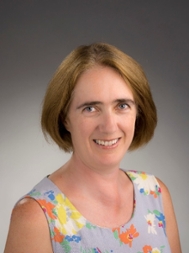Distinguished Women Scholar Lecture - Caroline Colijn
CANADA150 CRC Caroline Colijn will be visiting UVic to give a seminar on October 24th and a public talk on October 25th. We will also be having a student luncheon with Caroline to talk about her career pathway in mathematics (more info to follow). These events are supported by the Provost’s Distinguished Women Scholars Lecture Committee and the Pacific Institute for the Mathematical Sciences.

Academic Lecture:
October 24th, Engineering/Computer Science 124
- Tea reception 3-3:20pm
- Academic Seminar 3:20-4:20pm
Trees, metrics, inference and transmission
Improvements in sequencing technology mean that we have rich data on how infections evolve and spread. In this talk I will describe two settings where this calls for new mathematics. Trees -- in the sense of graphs with no cycles -- are a cornerstone of how we understand these data. Trees can represent patterns of ancestry through time, showing evolutionary stories that are supported by data and revealing how consistent models are with data. In the first part of the talk, I will describe a metric on trees that is based on polynomial representations of trees. Since each tree has a unique polynomial, comparing the coefficients yields a suite of tree comparison tools. We illustrate these with data from cetacean evolution and infectious disease. In the second part of the talk, I will describe how we can use trees, together with a type of colouring, to do Bayesian inference of who infected whom in an infectious disease outbreak. I will apply this tool to data from tuberculosis infections.
Public Lecture:
Provost’s Distinguished Women Scholar Lecture
October 25th, Bob Wright Centre A104
- Tea reception 6-6:30pm
- Public talk 6:30-9pm
Why do we need new mathematics in infectious disease?
New kinds of data are giving rise to exciting new opportunities in public health. The recent revolution in DNA sequencing means that for the first time, we can read the sequences of viruses and bacteria that cause human disease. This allows us to track their evolution through time, and even to track how they are spreading through communities and environments. However, the best ways to control infectious disease do not leap off the pages of these data. Instead, we need to build ways to model and understand these rich sources of data, and we need to connect the information we gain to our efforts in public health. These tasks require new mathematics. In my group, we have developed a way to connect the DNA sequences from bacterial infections to 'outbreak stories' -- who infected whom and when. We combine genomic data, locations and clinical histories, allowing us to estimate how the infection spreads in a community. I will describe how the method works and some of its applications for public health, and I will give a broader picture of some of the coming challenges that healthcare brings to the mathematical sciences.
